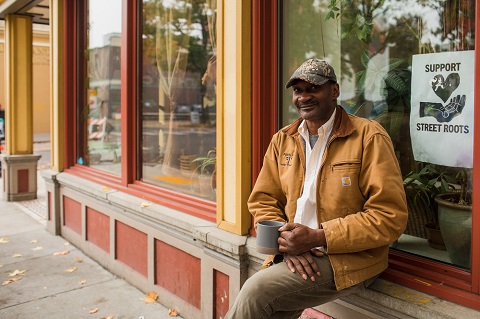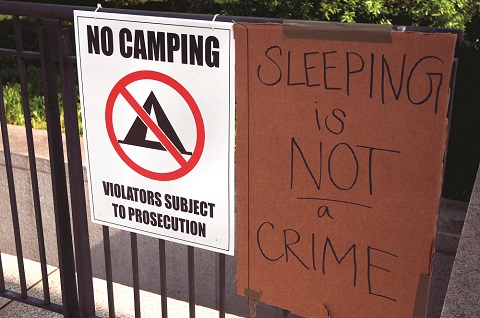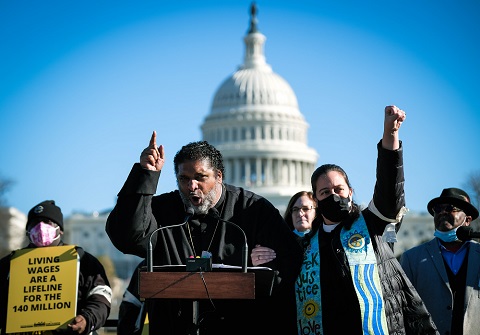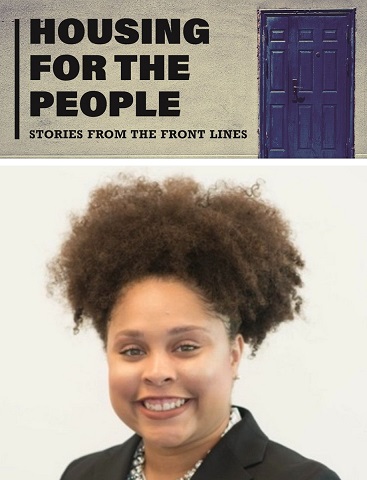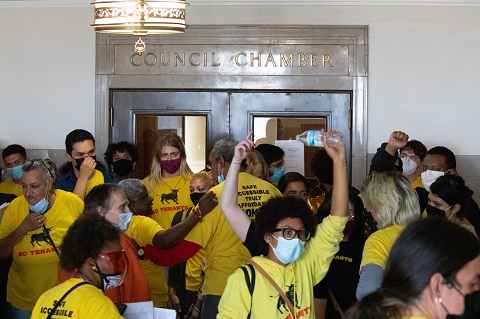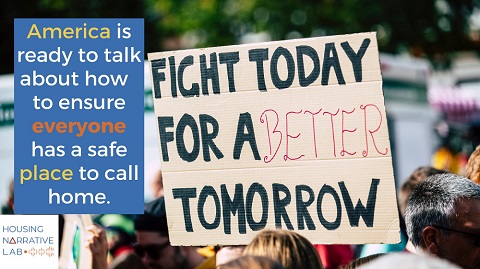By Ashley Archibald, Real Change
If you saw Real Change vendor Lisa Sawyer walking down the street in Seattle’s Pioneer Square or in her neighbourhood of Greenwood, you would be forgiven for doing a double-take, for feeling a flash of recognition.
Sawyer’s face enjoys a prominent spot on the website for All Home King County, the organisation that implements homeless and housing policy for King County. She won Real Change Vendor of the Year in 2015, and she advocates for policies impacting homeless and low-income people.
Despite her work selling the paper and pounding pavement to improve her lot and that of others, Sawyer and her boyfriend, Steven James Drogosz, have struggled to get into housing. She spent five years without a roof of her own, alternately sleeping outdoors and paying for expensive hotel stays for a respite from the cold and damp.
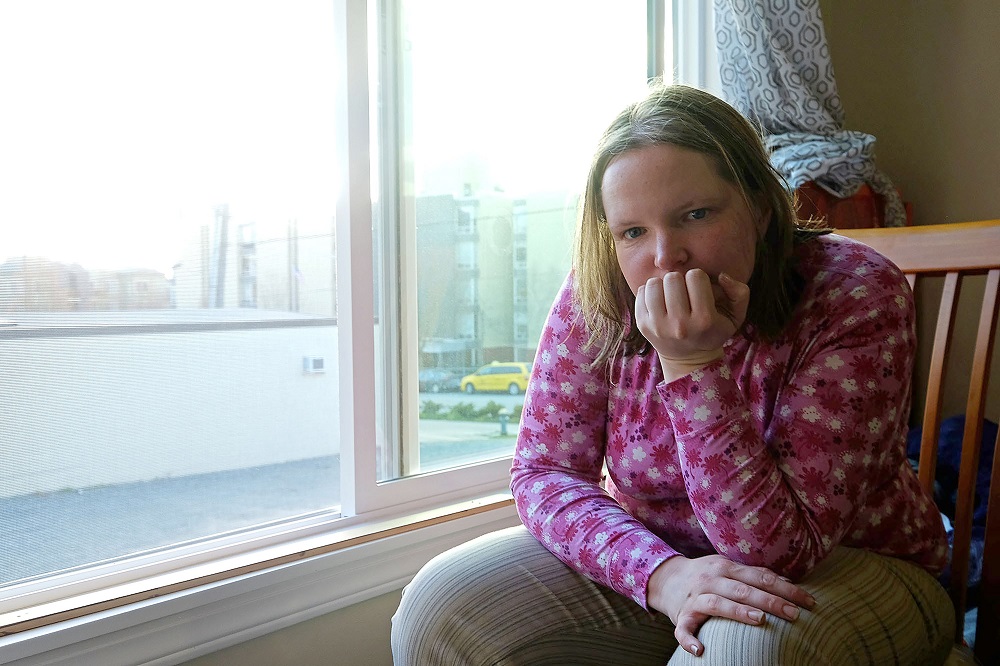
In November 2016, all that changed.
Sawyer and Drogosz received help through a rapid rehousing programme they accessed through DESC, a large shelter provider in Seattle, a programme meant to help people with their rent for a few months. After a year of looking, they found an apartment in Greenwood for $1,350 a month. Despite the price, they jumped on it. “If you’ve been outside so long, you want to get inside right away,” Sawyer said.
Now it looks like her new home may be slipping away.
Sawyer signed a lease for 10 months. The building she’s in expects to undergo refurbishment toward the end of 2017 and cannot have residents at that time. DESC paid her first and last months’ rent and move-in costs, but didn’t subsidise future months’ rental payments, leaving Sawyer and Drogosz paying the market rate. Five months into the programme, it’s getting increasingly difficult for Sawyer and Drogosz, a veteran with health problems, to make ends meet. She’s already been late on rent twice.
The rapid rehousing programme is a short-term housing programme. It comprises of housing searches, case management and financial assistance, typically lasting between three and nine months, and helps with the costs of housing. This support gives new tenants a chance to get on their feet and into self-sufficiency. The programme is the darling of housing policymakers and is enshrined in Seattle’s plan to combat homelessness, Pathways Home. It has also been promoted by the Federal Department of Housing and Urban Development (HUD) as being an efficient way to get people into housing that costs less per head than transitional housing, which is a more intensive programme.
Ideally, rapid rehousing programmes in King County follow standards laid down in the past few months by All Home. These standards include who can get into the programme and how much help clients receive. Programmes funded through any of the major funders — HUD, the city of Seattle, King County or United Way — have to adhere to these standards, said Felicia Salcedo, a spokesperson for All Home.
“Although rapid rehousing works for some who have fallen on hard times and need a hand, it doesn’t necessarily work for people with long-term needs that have prevented them from getting into housing”
To qualify, a person or family has to be “literally homeless,” meaning they’ve been sleeping on the street, in shelters or have fled domestic violence. Once they’re in housing, the programme covers the first month’s rent and move-in costs. It then tapers over the course of the next two months, first asking clients to pay 30 percent of their income toward rent in the second month and then 60 percent of their income toward rent in the third. It stays at that standard until financial assistance through the programme ends. Households are reassessed every three months. The 60 percent standard is quite high — HUD considers a person or family “rent-burdened” if they pay more than 30 percent of their income toward rent.
Critics of rapid rehousing tend not to be against the programme, just the way that governments have begun to lean on it to solve homelessness. Although rapid rehousing works for some who have fallen on hard times and need a hand, it doesn’t necessarily work for people with long-term needs that have prevented them from getting into housing. It also relies on the private housing market, which means that landlords have to be willing to accept someone who might have a less-than-perfect rental or credit history, while also knowing that the amount of time that tenants will receive a government subsidy is limited. Compare that to a Section 8 voucher, which also leverages the private housing market, but requires that tenants pay only 30 percent of their income.

Sawyer entered the rapid rehousing programme before these standards were published. Although DESC would not speak about Sawyer’s case specifically due to privacy concerns, it’s unclear why a person in her circumstances wouldn’t get a subsidy, said Greg Jensen, a spokesperson for DESC. “The situation you’re referring to is not the norm,” Jensen explained, “We wouldn’t typically set someone up in a situation they couldn’t either sustain or transition to a situation that they could get the kind of assistance they would need to be successful.”
About half of the 1,612 households that exited the programme in 2016 left for housing while they were still active participants, and 61 percent were permanently housed when they finished the programme. All Home calculated the average monthly income of people exiting the programme once every quarter during 2016. The amounts ranged from $1,173 to $1,374 per month. That means the average household could neither afford the average monthly rent in Seattle — more than $1,800 a month — nor Sawyer’s $1,350-per-month rent.
For her part, Sawyer is hanging on. DESC helped furnish her place, and she now has a kitchen and a microwave. It sounds small, but it’s the first time in a long time she’s been able to cook for herself, or have the cost-saving luxury of leftovers. Being inside, having her own place, was “totally life-changing,” she confirmed. Sawyer just hopes it doesn’t get taken away: “I feel like I don’t have any safety net at all.”
INSP members can download this story from the News Service here.








